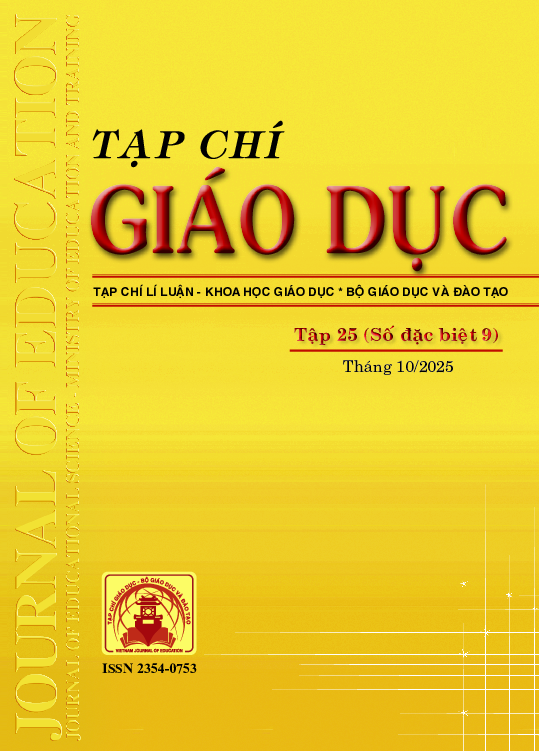Dạy học bài “Thực hành: Xác định động lượng của vật trước và sau va chạm” (Vật lí 10) với sự hỗ trợ của công nghệ thực tế ảo (VR)
Tóm tắt
In the current Industrial Revolution 4.0, technology has been widely applied in teaching and learning in schools. Applying virtual reality technology (VR) in teaching helps teachers simulate phenomena and experiments in a visual and vivid way, thereby increasing students' ability to absorb and enjoy learning. Thanks to the highly interactive learning environment, students can actively explore, practice and consolidate knowledge more effectively. This study proposes a process for teaching physics practice with the support of VR technology and illustrates the process for teaching the lesson "Practice: Determining the momentum of an object before and after collision" (Physics 10). Teaching Physics with the support of VR technology contributes to improving the effectiveness of teaching Physics, helping teachers reduce the time spent instructing students, making students more interested and understanding the lesson better. However, the implementation of this technology also poses requirements for technical infrastructure, investment costs and teachers' information technology competence.
Tài liệu tham khảo
Burdea, G. C., & Coiffet, P. (2003). Virtual reality technology (2nd ed.). Wiley-IEEE Press.
Johnston, S., Coyer, F., & Robyn, N. (2020). Simulation debriefing based on principles of transfer of learning: A pilot study. Nurse Education in Practice, 26, 102–108.
LaValle, S. M. (2019). Virtual Reality. Cambridge University Press.
Li, T. (2023). The research on the forms and advantages of VR in physics teaching. Highlights in Science, Engineering and Technology, 57, 252–257.
Nguyễn Ngọc Hưng (2016). Một số hướng đổi mới dạy học vật lí ở trường phổ thông. Tạp chí Khoa học, Trường Đại học Sư phạm Hà Nội, 6(8B), 3–10.
Radianti, J., Majchrzak, T. A., Fromm, J., & Wohlgenannt, I. (2020). A systematic review of immersive virtual reality applications for higher education. Computers & Education, 147, 103778.
Sherman, W. R., & Craig, A. B. (2019). Understanding virtual reality: Interface, application, and design (2nd ed.). Morgan Kaufmann.
Vũ Văn Hùng (tổng chủ biên), Bùi Gia Thịnh (chủ biên), Phạm Kim Chung, Tô Giang, Nguyễn Xuân Quang, Nguyễn Văn Thụ (2024). Vật lí 10 (Bộ Kết nối tri thức với cuộc sống). NXB Giáo dục Việt Nam.
Đã Xuất bản
Cách trích dẫn
Số
Chuyên mục
Giấy phép

Tác phẩm này được cấp phép theo Ghi nhận tác giả của Creative Commons Giấy phép quốc tế 4.0 .












